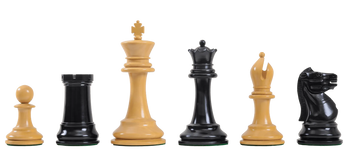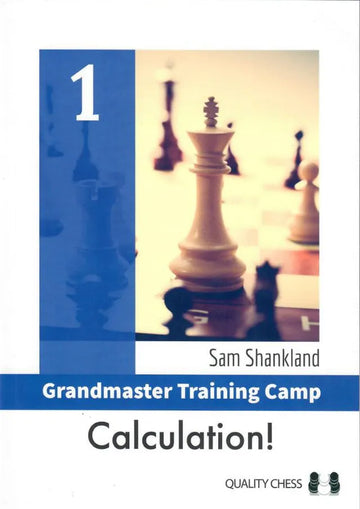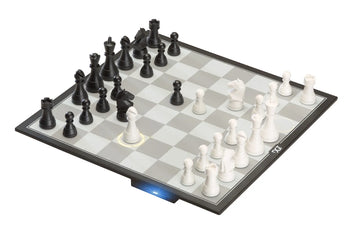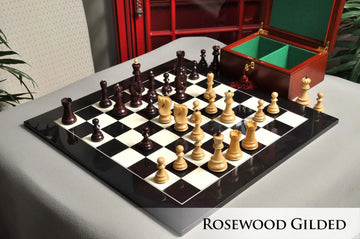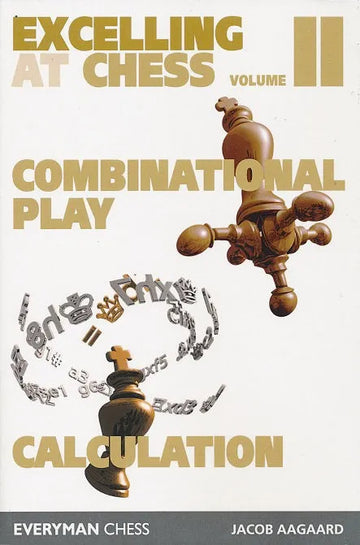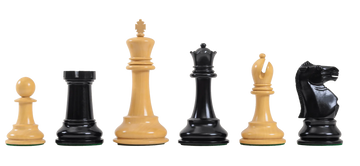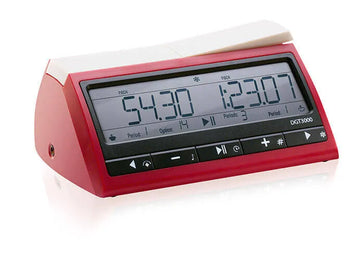How to Be a Better Chess Calculator
Being a good chess calculator is all about visualizing the chessboard several moves ahead to evaluate the best move to make. But how do you know which variations to calculate, and how many moves ahead should you be thinking?
The answers to these questions surprise many chess players, and that’s why a guide like this one can be so helpful. Since chess calculation takes a lot of time and brainpower, it’s worth focusing on the right places! That’s what we’re here to help you do.

What is Calculation in Chess?
In chess, calculation means visualizing one to several moves ahead so you can evaluate or ‘calculate’ the very best move to play.
Calculating is an essential skill when looking at attacking options as well as when defending an opponent's attack. It’s often necessary to calculate several possible ‘lines’ or ‘variations’ to choose the best one.
Calculating for Beginner, Intermediate, and Advanced Players
For newcomers to chess, simply calculating one or two moves ahead is a good start. Looking at the board as if you had just played the move you intend to play is a crucial skill for preventing blunders that can lead to game loss.
Interestingly, intermediate players might find themselves calculating more than beginners or advanced players. Because tactical pattern recognition and positional understanding aren’t as developed as in advanced chess players, intermediates often need to calculate a larger number of variations to find the best option.
Advanced chess players are so adept at understanding positions and spotting tactical maneuvers that they often don’t need to calculate as much as you might imagine! By simply spotting the quickest route to a winning tactic or superior position, advanced players can narrow down the options and thus keep calculations to a minimum.
The Most Essential Chess Calculations: Safety Checks!
Most beginner chess matches are lost by a blunder or serious mistake. If there is one golden rule to help beginners radically level up their chess, it’s: Do your safety checks! Safety checks are basic calculations performed on every move that prevent simple mistakes that could cost the game.
Chess Calculator: Safety Check an Opponent’s Move
Firstly, after every move your opponent makes, check to see what that move changes. Is the piece threatening an immediate attack? Did the move uncover another piece that could pose a threat? What can your opponent follow with on their next move?
Check all of the squares that piece can now move to, or that the piece it uncovered can now move to. Be vigilant in checking every time! Even harmless-looking moves can prove fatal when you forget to check!
In this example, Black has just played ...c5-c4. Now, check for threats. The move immediately threatens White’s pawn on b3. But don’t stop there! What else does the move do? Which moves does this permit Black to play next? Look carefully.

Did you spot it? Pushing the pawn forward allows Black’s dark-squared bishop to enter the now-vacant c5 square (Be7-c5), pinning White’s queen. If White fails to spot the danger, it will lose a queen instead of just a pawn. Ouch!
Chess Calculator: Safety Check Your Own Move
Just as important as checking each and every move of your opponent is to check every move that you’re planning to make. Even after thorough calculation, you must still make a safety check to ensure you didn’t miss anything.
Here’s a game-changing tip from seasoned chess players: Write down your move before making your safety checks! This habit ensures that you’ll always do your safety checks properly before moving the piece. If it turns out to be an error, you can just scribble out your notation instead of losing the game!
In this example, Black might well be thinking of capturing the seemingly free pawn on e4. The player writes down the move (...Nxe4) then makes their final safety checks. Wait! What danger lurks there?

Yes! After ...Nxe5, White can play Re1, pinning the knight and winning it shortly after. It didn’t turn out to be a good move after all.
It might amaze you how many chess games you can win simply by doing safety checks and not making mistakes! At beginner level and sometimes at higher levels too, you can often rely on your opponent making mistakes and handing the game to you.
How to Calculate Your Opponent’s Attack
Safety checks are the bare minimum calculations that are required to prevent you from making a blunder. But a good chess calculator often needs to go deeper.
When your opponent captures a piece, gives a check, places a piece in your half of the board, or threatens an attack, you may need to calculate the next few moves to find the best way to defend.
First, Calculate the Scope of Your Opponent’s Attack
First, check how far your opponent’s attack will go. What are they planning? Is there only one attacking variation that you need to calculate, or several? Try to visualize the most threatening moves your opponent could play next to inform your best response.
If your opponent is forcing you to play a particular move, go ahead and play it! There’s no point wasting precious time calculating ahead when a move is forced.
Most often, however, an attack will leave you with various ways to respond. If you’re playing with a clock, you’ll have limited time to check for all options, so what should a good chess calculator prioritize?
First, Look for a Counterstrike!
In chess, the very best way to defend is to attack! Playing a counterstrike, your opponent will be forced to put their own attack on hold or even retreat to defend their half of the board. Your attack might also amount to a winning advantage, so always be sure to look for counterattacking options first.
In the example below, Black is pinning White’s f3 knight and has just played 7...Nd4, threatening to capture it. Can you put your chess calculator hat on and find a counterstrike to turn the tables?
Hint: A great way to undo a pin is to deliver a check!

Solution: First, White plays Bxf7, forcing Black’s king onto f7. Now White can deliver the check (Ng5+) that releases the knight and discovers an attack on Black’s light-squared bishop. White comes out a pawn up, and Black has lost castling rights. All because of smart counterattacking calculations!
Remember, it’s easier to attack than to defend! Strong players always look for a way to move forward. If you make a mistake while attacking, you’ll lose your attack. If you make a mistake while defending, you might lose the game!
Find an Improving Move
Oftentimes, there will be no way to hit back with a counterattack. But don’t make passive, purely defensive moves unless you’re forced to! Instead, look for defending moves that help you develop, move forward, or make a piece more active.
In this example, Black’s rook has just moved to attack White’s queen on the c-file. Can you find a defending move that will improve White’s position?

Did you get it? Nac5! This move not only blocks the attack but also takes the knight off a weak square at the edge of the board and into a more central outpost in the opponent’s half of the board. With some basic positional understanding, you can find the right move without needing to calculate every variation.
How to Calculate Your Own Attack
In a neutral position, you always want to be looking for attacking options that force a defensive move from your opponent.
But how do you know which ideas to spend your precious time calculating? You can narrow it down by prioritizing forcing moves in the following order: a) Checks, b) Captures, and c) Threats (including landing a piece in your opponent’s half of the board).
Checks
How many games have you won or lost by an emphatic check at the right moment?
Checks are powerful moves because they force a defensive move, often weakening your opponent's position. Checks are great for initiating attacking momentum—one check can often lead to a series of further attacking moves.
On every move, scan for the possibility of delivering check in the next few moves. Establishing this chess calculation habit alone could win you many more games!
Captures
Secondly, look for ways you might be able to capture an opponent’s piece. Begin by looking for their weakest pieces on the board—the ones that aren’t defended or those where you could ‘capture the defender.’
Also, look for pieces that are stationed in places where you can pin, skewer, or fork them. Calculate to see if you can force a variation leading to the eventual capture.
In this example, how can Black capture the defender to win material?

Yes! By first exchanging queens, White’s knight’s defender has been eliminated. Now you can pick up the knight for free!
A Good Chess Calculator Scans For Threats
Lastly, can you play any moves that threaten one of the opponent's pieces or a potential attack that your opponent must respond to?
Placing one of your pieces in your opponent’s half of the board can also be considered a threat because of the danger they pose in such a position. Strong players will always try to eliminate the opponent's pieces on their half of the board, thereby forcing a response from them. If they don’t respond, all the better for you!
Scan Several Options—Especially If You’re Losing!
A common mistake players make when calculating is to become overly focused on calculating one particular line in great depth without considering other options. Remember, even if you spot a good variation, keep looking for a better one! This is especially important when you are losing.
Suppose you are a bishop down, and you discover a way to capture an opponent’s pawn. While this will help you recover some material deficit, you’ll still be losing. Keep looking! Maybe you will find a tactic to win your opponent’s rook and go up on material!
On the other hand, if you’re in a winning position with limited time to calculate every variation, you might as well go ahead and capture the pawn! You don’t need to look for more heroic attacks to win the game. Keep things steady and look for any legitimate captures to cement your lead.
Only Calculate Until the End of a Forcing Line
You could spend hours calculating hypothetical moves that your opponent could play into infinity, but there are better ways to spend your precious brain juice! An excessive chess calculator could cost you a great deal of time and energy.
When looking at attacking options, you only need to calculate moves that force a response from your opponent. Calculate the various responses they can make to see if the move is worthwhile—but don’t calculate beyond that!
In this example, White calculates that if Black’s knight is captured, it can win a pawn by capturing on e5: (6.Bxc6+ bxc6 7. fxe5 dxe5 8. Nxe5).

Both of Black’s moves are forced, and the outcome is strong for White, without any immediate threats. There is no need to calculate any further!
Instead, use your time wisely to scan for even better variations that might gain you an even greater advantage!
Conclusion: Being a Good Chess Calculator Isn't Rocket Science!
Calculating in chess is probably more straightforward than most people think. By following some simple principles and avoiding over-calculation, chess can be played in a natural, creative way that is more based on positional understanding and tactical recognition than endless equations.
There’s no doubt, however, that being a better chess calculator will significantly improve your overall game. If you’re looking for in-depth masterclasses on the topic, Wholesale Chess stocks a range of stellar books and DVDs on becoming a chess calculation champion!

